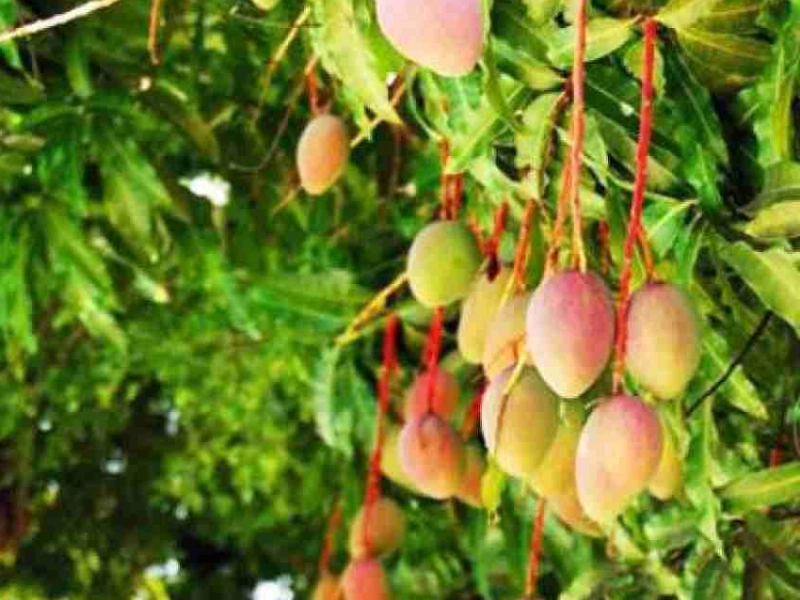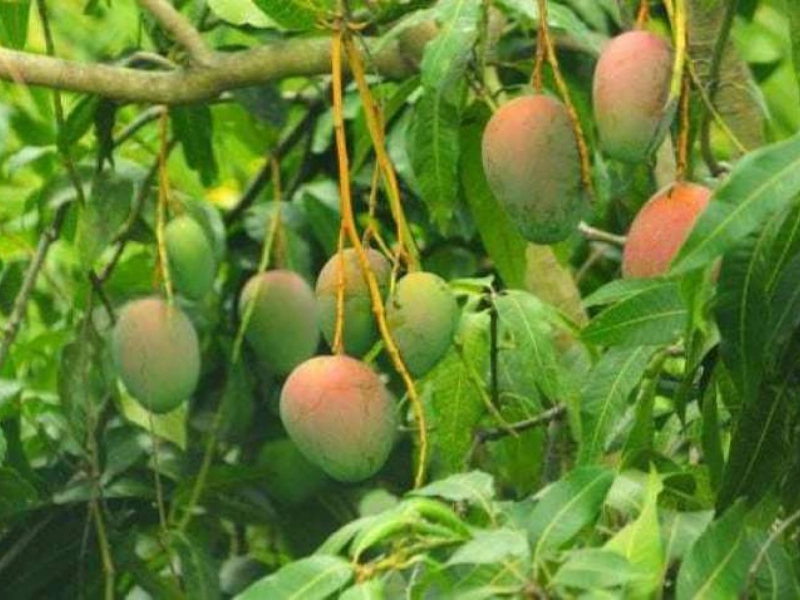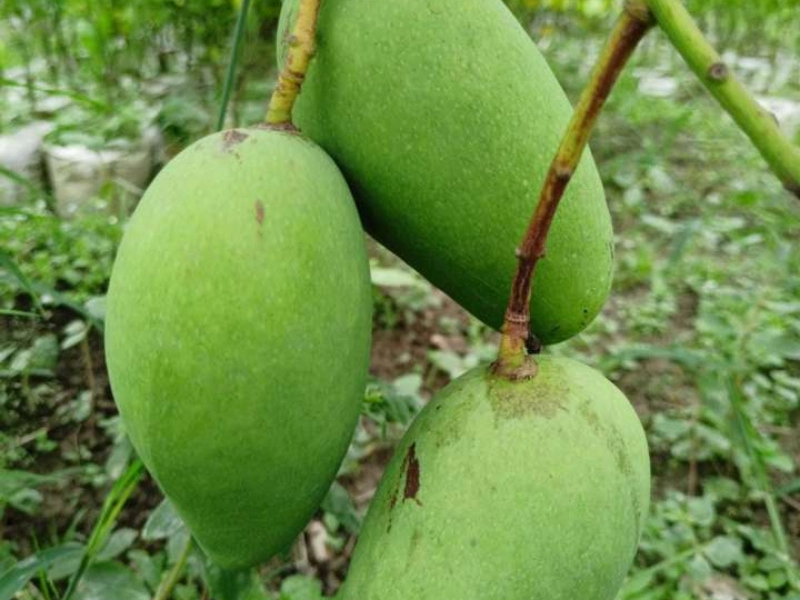Apart from providing mouthwatering fruit, mango trees accentuate any garden with their rich vegetation and aromatic flowers. Mangoes must be properly cared for and maintained if a plentiful crop is to be guaranteed. Covering all facets of planting, watering, fertilizing, trimming, pest management, and harvesting, this article offers insightful advice on how to properly grow mango trees. Following these rules will help your mango trees to produce as best they could and ensure a good season.

 The health and output of mango plants depend on correct irrigation. While adult mango trees are more drought-tolerant, young mango plants need consistent irrigation to build their roots. Water your mango trees deeply once or twice a week during the first few years so that the ground dries out between waterings. This promotes robustness of the tree and deep root development.
As the tree ages, cut the watering frequency. Dry spells should be used for watering; especially when the tree is blossoming or fruiting, this is when it most needs moisture. Check the soil moisture always before watering since overwatering might cause root rot. Generally speaking, stick your finger into the ground; if it feels dry an inch below the surface, it's time to water. Using correct watering methods can help to guarantee the continued health and output of your mango trees.
The health and output of mango plants depend on correct irrigation. While adult mango trees are more drought-tolerant, young mango plants need consistent irrigation to build their roots. Water your mango trees deeply once or twice a week during the first few years so that the ground dries out between waterings. This promotes robustness of the tree and deep root development.
As the tree ages, cut the watering frequency. Dry spells should be used for watering; especially when the tree is blossoming or fruiting, this is when it most needs moisture. Check the soil moisture always before watering since overwatering might cause root rot. Generally speaking, stick your finger into the ground; if it feels dry an inch below the surface, it's time to water. Using correct watering methods can help to guarantee the continued health and output of your mango trees.
 Maximizing the production of mango plants depends much on fertilization. Promoting strong development and fruit output depends on a balanced fertilizer high in nitrogen, phosphorous, and potassium. Usually in spring and early summer, apply fertilizer during the growing season—when the tree is most actively developing. Organic choices like compost and well-rotted manure as well as a slow-release granular fertilizer are available.
Based on the age and size of your tree, follow advised rates for applying fertilizer. Smaller amounts are enough for young trees; mature trees could need more. Furthermore take into account include iron, zinc, and magnesium, which are vital for best development and fruit quality. Frequent health monitoring of your tree and modifying your fertilizing schedule can help to enhance fruit output and guarantee vivid, healthy foliage.
Maximizing the production of mango plants depends much on fertilization. Promoting strong development and fruit output depends on a balanced fertilizer high in nitrogen, phosphorous, and potassium. Usually in spring and early summer, apply fertilizer during the growing season—when the tree is most actively developing. Organic choices like compost and well-rotted manure as well as a slow-release granular fertilizer are available.
Based on the age and size of your tree, follow advised rates for applying fertilizer. Smaller amounts are enough for young trees; mature trees could need more. Furthermore take into account include iron, zinc, and magnesium, which are vital for best development and fruit quality. Frequent health monitoring of your tree and modifying your fertilizing schedule can help to enhance fruit output and guarantee vivid, healthy foliage.
 One of the key activities that increases fruit output by bettering ventilation and sunlight exposure is pruning mango trees. Frequent pruning promotes the development of fresh, productive branches and allows the tree to keep its form. Just before the fresh growth starts, during the dry season, is the ideal time to cut. This time lets the tree bounce back fast and reduces the disease risk.
Pruning should concentrate on cutting dead or diseased branches as well as any that cross or rub against one another. In addition to increasing airflow, this lowers the likelihood of bug problems. Thinning out congested places will also let sunlight reach the canopy, so encouraging improved fruit development. Try to make the tree's center open, therefore promoting a more efficient development pattern. Your mango trees will be healthier and more prolific with correct pruning methods.
One of the key activities that increases fruit output by bettering ventilation and sunlight exposure is pruning mango trees. Frequent pruning promotes the development of fresh, productive branches and allows the tree to keep its form. Just before the fresh growth starts, during the dry season, is the ideal time to cut. This time lets the tree bounce back fast and reduces the disease risk.
Pruning should concentrate on cutting dead or diseased branches as well as any that cross or rub against one another. In addition to increasing airflow, this lowers the likelihood of bug problems. Thinning out congested places will also let sunlight reach the canopy, so encouraging improved fruit development. Try to make the tree's center open, therefore promoting a more efficient development pattern. Your mango trees will be healthier and more prolific with correct pruning methods.
Maintaining the health of mango trees and guaranteeing best output depend on effective control of pests and diseases. Aphids, mealybugs, and fruit flies—which can ruin leaves and fruit—are among common pests. Check your trees often for evidence of an infestation, then act fast. Without damaging beneficial insects, natural therapies like neem oil or insecticidal soap can control pest numbers quite successfully. Particularly in humid environments, diseases such powdery mildew and anthracnose can also compromise mango trees. Proper spacing for ventilation and avoidance of overhead watering—which can produce a moist environment fit for fungal development—help to prevent these illnesses. Remove diseased branches right once to stop the spread if you see any symptoms such discolouration or wilting leaves. Using an integrated pest control strategy can help to maintain your mango trees strong and healthy.
Enjoying the optimum flavor and quality from mangoes depends on knowing when and how to pick them. Usually depending on the variety and temperature, mangoes take many months to develop. The color of the fruit is a helpful clue of ripeness; mature mangoes sometimes transition from green to a vivid yellow or orange. Squeeze the fruit gently; if it yields just little, it is probably ready for picking. Cut the fruit off the tree using a sharp knife or pruning shears such that a tiny bit of the stem is left attached. This extends shelf life and helps stop bruising. Handle the gathered mangoes gently to prevent damage. Should the mangoes still be firm, let them ripen at room temperature following harvest. A satisfying experience is enjoying fresh mangoes straight from your tree; with good care, you may increase your yield and enjoy the mouthwatering outcomes of your efforts.